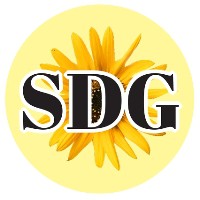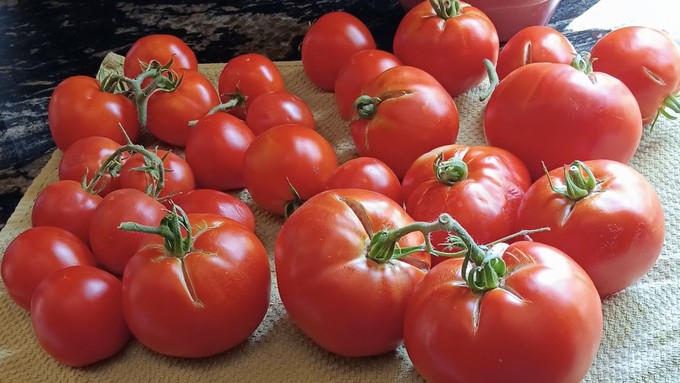
Popular podcast host shares keynote speaker duties at Harvest Day

Fred Hoffman says this summer is "one of the best ever for tomatoes and peppers." Photo courtesy Fred Hoffman
Every gardener wants to save time. We’re big on saving money – and water, too.
Learn how to accomplish all three with the help of lifetime master gardener and podcast host "Farmer Fred" Hoffman and longtime horticulture professor Debbie Flower. They’re the opening keynote speakers at the 2023 Harvest Day celebration Saturday, Aug. 5, at the Fair Oaks Horticulture Center in Fair Oaks Park.
Hosted by the UCCE master gardeners of Sacramento County, Harvest Day is the Sacramento region’s largest free gardening event of its kind, mixing hands-on education with good, green fun. Admission and parking are free. Gates open at 8 a.m. with festivities wrapping up at 2 p.m.
At 8:30 a.m. Saturday, Hoffman and Flower will present “Tips for Saving Time, Money and Water in the Garden.”
Hoffman, the host of “Garden Basics with Farmer Fred,” is always a very popular speaker at Harvest Day, appearing almost every year.
“I’ve lost count,” he said of the number of times he’s appeared at the event. “Harvest Day has been around since 1998. Harvest Day is the best garden event in Northern California. And it’s free!”
Hoffman and Flower could probably talk all Harvest Day about their topic, but they only have 40 minutes. So they plan to focus on four major areas of potential and timely savings.
Said Hoffman, “The road map for our talk is this: Good drainage do’s and don’ts; how to protect your container plants during a heat wave; how to reuse old potting soil; and how to save old seed for its maximum life.”
Hoffman shared a couple of his favorite tips in advance.
“One of my favorite seed germination tips – that is now part of my winter seed-starting repertoire – came from Debbie Flower,” he said, crediting his talk’s co-host. “Pepper seeds can take up to three weeks to germinate. You can cut that time nearly in half by soaking the pepper seeds in hydrogen peroxide for 10 minutes. Combined with bottom heat, I had germination of ‘Cornito Giallo’ and ‘Tequila’ sweet pepper seeds in 11 days.”
Hoffman used to garden on 10 acres of former pasture land near Herald. These days, he’s limited to a suburban backyard in Folsom. With less space comes more pressure to make the most of every square inch. Hoffman focuses on building his soil so it will be full of nutrients for healthy plants.
“Since moving to Folsom, I’ve started another soil-building practice,” he explained. “(It’s) gathering my neighbor’s fallen oak leaves in the late autumn, shredding the leaves, and placing them several inches thick on my dormant raised beds, after I have topped the beds with a couple of inches of compost and worm castings. I leave the leaf mulch there until I plant in those beds the following spring. And then I put that leaf mulch back in the beds around the new plants to act as a mulch to keep the soil temperature moderate, preserve soil moisture, and – as it breaks down – feeding the soil biology.”
Such organic mulch saves time (it cuts down on weeds) as well as water and money – fallen oak leaves are free, too!
So far, Hoffman is enjoying a bountiful 2023 with lots of home-grown tomatoes.
“This summer is one of the best ever for tomatoes and peppers,” he notes. “(It’s been) so-so for zucchini – I’m not complaining, mind you! The Swiss chard is producing for its third summer – yes, you can grow Swiss chard in the summer here. Just do it on the north side of the house.:
The tomatoes are hefty but show some weather-related cracking, which Hoffman pegged to the sudden heat in late June and early July after a very mild spring.
“Garlic was a good performer,” he added. “I just finished the onion harvest. The red onions were undersized – for an understandable reason; the neighbor’s 50-foot deodar cedar tree fell on that bed last January. But the yellow sweet Spanish onions were big and tasty.”
Hoffman is now getting ready for fall and winter. “I already started my cool-season leafy greens from seed, including an alleged heat-tolerant Chinese cabbage variety (‘Tokyo Bekana’) and a Japanese chard variety, ‘Umaina.’ ”
Find out more at Harvest Day. For details: https://sacmg.ucanr.edu/Harvest_Day/.
Comments
0 comments have been posted.Sacramento Digs Gardening to your inbox.
Sites We Like
Garden Checklist for week of April 21
This week there’s plenty to keep gardeners busy. With no rain in the immediate forecast, remember to irrigate any new transplants.
* Weed, weed, weed! Get them before they flower and go to seed.
* April is the last chance to plant citrus trees such as dwarf orange, lemon and kumquat. These trees also look good in landscaping and provide fresh fruit in winter.
* Smell orange blossoms? Feed citrus trees with a low dose of balanced fertilizer (such as 10-10-10) during bloom to help set fruit. Keep an eye out for ants.
* Apply slow-release fertilizer to the lawn.
* Thoroughly clean debris from the bottom of outdoor ponds or fountains.
* Spring brings a flush of rapid growth, and that means your garden is really hungry. Feed shrubs and trees with a slow-release fertilizer. Or mulch with a 1-inch layer of compost.
* Azaleas and camellias looking a little yellow? If leaves are turning yellow between the veins, give them a boost with chelated iron.
* Trim dead flowers but not leaves from spring-flowering bulbs such as daffodils and tulips. Those leaves gather energy to create next year's flowers. Also, give the bulbs a fertilizer boost after bloom.
* Pinch chrysanthemums back to 12 inches for fall flowers. Cut old stems to the ground.
* Mulch around plants to conserve moisture and control weeds.
* From seed, plant beans, beets, cantaloupes, carrots, corn, cucumbers, melons, radishes and squash.
* Plant onion sets.
* In the flower garden, plant seeds for asters, cosmos, celosia, marigolds, salvia, sunflowers and zinnias.
* Transplant petunias, zinnias, geraniums and other summer bloomers.
* Plant perennials and dahlia tubers for summer bloom.
* Mid to late April is about the last chance to plant summer bulbs, such as gladiolus and tuberous begonias.
* Transplant lettuce seedlings. Choose varieties that mature quickly such as loose leaf.